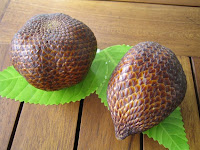Dyer’s madder, Rubia tinctorum is native to Southern Europe, southern Britain and the Mediterranean and is one of the ancient dyes used in Britain along with woad in prehistoric times. Madder dyes cloth red and various other shades including purple, pink, orange and brown. It was used to dye the coats of the Grenadier Guards, who were known as the Redcoats, in the American War of Independence and earlier. Rose madder is an artist’s pigment, which is a burgundy pink, and Indian Madder or Rubia cordifolia is native to hilly districts of the Indian sub-continent and Java. Dyer’s madder flowers in June and its seeds ripen in September in Europe. It has small yellow flowers that look like little stars, similar to those of creamy elderflowers.
 |
| Indian Madder |
Madder has been used for all kinds of purposes throughout the centuries; the ancient Etruscans used it for religious purposes, and cloth dyed with madder was found in the tombs of the pharaohs. It is thought that it was also used as a cosmetic, probably as lip colour or blusher in ancient Egypt. Herodotus the ancient Greek historian tells us that Libyan women wore red cloaks dyed with madder in the 5th century BC.
 In 1868 the alizarin found in madder was made synthetically by two Germans, Graebe and Liebermann and then pupurin was also made synthetically so madder gradually ceased to be useful as a crop for the textile and dying industry.
In 1868 the alizarin found in madder was made synthetically by two Germans, Graebe and Liebermann and then pupurin was also made synthetically so madder gradually ceased to be useful as a crop for the textile and dying industry. It seems that by that time it was not being utilized in traditional medicine, so madder became a forgotten plant in most of Europe. It had been used to bring on irregular periods in women and as a remedy for jaundice in Pliny’s time, while Rubia sylvestris, another European species was used for complaints of the liver and spleen as well as to remove stones and gravel from the internal organs.
In the Indian sub-continent Indian Madder has been used as dye, but was considered inferior to the “Turkey Red” of the R. tinctorum species which as its name suggests generally came from Turkey. Indian madder dye was called Munjeet.
 Indian Madder (Rubia cordifolia) or Manjeeth as it is called in Urdu, was and is used in traditional medicine for a variety of ailments. This plant has different constituents to R. tinctorum according to modern medical research. It has been used for gouty arthritis and to get rid of the build up of calculus around joints. It is used especially for skin complaints and irritations and for the complexion, to get rid of freckles, pimples and acne, for these purposes it can be taken internally or applied externally. A face pack is made from 100 grams of crushed dried orange peel, and 50 grams each of powdered sandalwood, turmeric powder and powdered madder root.
Indian Madder (Rubia cordifolia) or Manjeeth as it is called in Urdu, was and is used in traditional medicine for a variety of ailments. This plant has different constituents to R. tinctorum according to modern medical research. It has been used for gouty arthritis and to get rid of the build up of calculus around joints. It is used especially for skin complaints and irritations and for the complexion, to get rid of freckles, pimples and acne, for these purposes it can be taken internally or applied externally. A face pack is made from 100 grams of crushed dried orange peel, and 50 grams each of powdered sandalwood, turmeric powder and powdered madder root. The roots are astringent and are used for dysentery, expelling worms, killing pain, to rid the intestines of parasites, to improve the voice and for inflammation of the uterus, vagina eyes, ears, urinary tract and to purify the blood. It is also said to be a rejuvenator of the skin and anti-diabetic, as well as helping with eczema, and skin allergies.
 The flavonoids, phenolic glycosides and other constituents seem to vary from species to species, and there are around sixty of these, but it has been shown that Indian madder does have anti-inflammatory properties and may be an anti-cancer agent.
The flavonoids, phenolic glycosides and other constituents seem to vary from species to species, and there are around sixty of these, but it has been shown that Indian madder does have anti-inflammatory properties and may be an anti-cancer agent.


















































